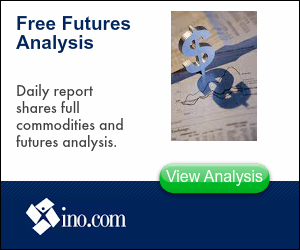Dow dropped 5 after selling off in the last hour, decliners ahead of advancers 5-4 & NAZ lost 7. The MLP index rose 2+ to the 434 (can't get far above the recent lows below 420) & the REIT index dropped 5+ to the 437s. Junk bond funds were flattish & Treasuries went higher. Oil surged again, to the upper 53s, but gold slid lower.
AMJ (Alerian MLP Index tracking fund)
![Live 24 hours gold chart [Kitco Inc.]](http://www.kitco.com/images/live/gold.gif?0.18970771330834346)

US consumer borrowing increased in Feb as the value of non-revolving debt climbed by the most since Jul 2011. The $15.5B advance in household credit followed a $10.8B gain in Jan that was smaller than initially reported, according to the Federal Reserve. A surge in non-revolving loans such as those for automobile purchases & education more than offset the biggest drop in revolving credit since Nov 2010. Consumers burned by mounting debt during the recession will need to see economic improvement in the way of wage gains & job growth to feel more comfortable boosting their borrowing. While households have been willing to take out loans for education & vehicles, they’ve remained reluctant to break out the plastic for other spending. The forecast called for a $12.5B gain. The report doesn’t track debt secured by real estate, such as mortgages & home equity lines of credit. Revolving debt, which includes credit-card spending, decreased by $3.7B after a $1B decline the month before. Non-revolving credit, such as that for college tuition & the purchase of vehicles & mobile homes, increased $19.2B after an $11.8B gain in Jan. Lending to consumers by the federal gov, mainly for student loans, rose $6.4B before adjusting for seasonal variations after surging $27.9B in Jan.
The world economy’s growth potential won’t soon return to levels seen before 2008 financial crisis as business investment slumps, raising the urgency for officials to find ways to stimulate demand, the IMF said. “A large share of the output loss since the crisis can now be seen as permanent, and policies are thus unlikely to return investment fully to its pre-crisis trend,” the IMF said in the fund’s World Economic Outlook. “This does not imply, however, that there is no scope for using fiscal and monetary policies to help sustain the recovery and thus to encourage firms to invest.” The lender highlights a challenge facing central banks: An extended period of low interest rates has yet to trigger a robust acceleration in the global economy. Compounding the sluggish recovery are longer-term issues such as aging labor forces that threaten to limit growth further. It recommends countries take steps including investing in infrastructure, boosting labor-force participation & reducing regulatory barriers for companies. “Firms have reacted to weak sales -- both current and prospective -- by reducing capital spending,” the IMF said. “A comprehensive policy effort to expand output would contribute to a sustained rise in private investment.” While potential growth in advanced economies will tick up in the next five years, it will remain well below levels before the financial crisis. In advanced economies, potential growth will accelerate to an average of 1.6% over the next 5 years, compared with 1.3% from 2008 to 2014. Still, potential growth will remain weaker than the 2.3% pace from 2001-2007. It said in many developed economies, accommodative monetary policy “remains essential to prevent real interest rates from rising prematurely, given persistent & sizable economic slack as well as strong disinflation dynamics.” the IMF said.
The ECB has met its monthly goal of purchasing €60B in gov & private-sector bonds, the first stage of a €1.1T ($1.2T) program aimed at boosting the economy. The central bank said it bought €52.5B in gov bonds since launching the effort Mar 9. The goal was reached by additional purchases of private-sector bonds. The bond purchases, made with newly printed money, are aimed at raising inflation from a worrisome negative 0.1% annually. It should also support the gradual economic recovery that has been taking hold. The bank has recently underlined its determination to carry out the full amount in purchases through Sep 2016 & beyond if necessary, even though the economy has shown signs of improvement.
Stocks had another decent rally. Then sellers returned in the last hour, taking the Dow down almost 100. Selling was a reaction to gains yesterday & today with little to back up higher prices. Earnings season kicks off after the close tomorrow & the markets are getting nervous!!
Dow Jones Industrials
AMJ (Alerian MLP Index tracking fund)
| CLK15.NYM | ....Crude Oil May 15 | ....53.90 | (3.4%) |
![Live 24 hours gold chart [Kitco Inc.]](http://www.kitco.com/images/live/gold.gif?0.18970771330834346)

US consumer borrowing increased in Feb as the value of non-revolving debt climbed by the most since Jul 2011. The $15.5B advance in household credit followed a $10.8B gain in Jan that was smaller than initially reported, according to the Federal Reserve. A surge in non-revolving loans such as those for automobile purchases & education more than offset the biggest drop in revolving credit since Nov 2010. Consumers burned by mounting debt during the recession will need to see economic improvement in the way of wage gains & job growth to feel more comfortable boosting their borrowing. While households have been willing to take out loans for education & vehicles, they’ve remained reluctant to break out the plastic for other spending. The forecast called for a $12.5B gain. The report doesn’t track debt secured by real estate, such as mortgages & home equity lines of credit. Revolving debt, which includes credit-card spending, decreased by $3.7B after a $1B decline the month before. Non-revolving credit, such as that for college tuition & the purchase of vehicles & mobile homes, increased $19.2B after an $11.8B gain in Jan. Lending to consumers by the federal gov, mainly for student loans, rose $6.4B before adjusting for seasonal variations after surging $27.9B in Jan.
Consumer Credit in U.S. Increases on Jump in Non-Revolving Debt
The world economy’s growth potential won’t soon return to levels seen before 2008 financial crisis as business investment slumps, raising the urgency for officials to find ways to stimulate demand, the IMF said. “A large share of the output loss since the crisis can now be seen as permanent, and policies are thus unlikely to return investment fully to its pre-crisis trend,” the IMF said in the fund’s World Economic Outlook. “This does not imply, however, that there is no scope for using fiscal and monetary policies to help sustain the recovery and thus to encourage firms to invest.” The lender highlights a challenge facing central banks: An extended period of low interest rates has yet to trigger a robust acceleration in the global economy. Compounding the sluggish recovery are longer-term issues such as aging labor forces that threaten to limit growth further. It recommends countries take steps including investing in infrastructure, boosting labor-force participation & reducing regulatory barriers for companies. “Firms have reacted to weak sales -- both current and prospective -- by reducing capital spending,” the IMF said. “A comprehensive policy effort to expand output would contribute to a sustained rise in private investment.” While potential growth in advanced economies will tick up in the next five years, it will remain well below levels before the financial crisis. In advanced economies, potential growth will accelerate to an average of 1.6% over the next 5 years, compared with 1.3% from 2008 to 2014. Still, potential growth will remain weaker than the 2.3% pace from 2001-2007. It said in many developed economies, accommodative monetary policy “remains essential to prevent real interest rates from rising prematurely, given persistent & sizable economic slack as well as strong disinflation dynamics.” the IMF said.
IMF Urges Policies to Boost Demand as Global Recovery Downshifts
The ECB has met its monthly goal of purchasing €60B in gov & private-sector bonds, the first stage of a €1.1T ($1.2T) program aimed at boosting the economy. The central bank said it bought €52.5B in gov bonds since launching the effort Mar 9. The goal was reached by additional purchases of private-sector bonds. The bond purchases, made with newly printed money, are aimed at raising inflation from a worrisome negative 0.1% annually. It should also support the gradual economic recovery that has been taking hold. The bank has recently underlined its determination to carry out the full amount in purchases through Sep 2016 & beyond if necessary, even though the economy has shown signs of improvement.
European Central Bank stimulus effort meets 1st month goal
Stocks had another decent rally. Then sellers returned in the last hour, taking the Dow down almost 100. Selling was a reaction to gains yesterday & today with little to back up higher prices. Earnings season kicks off after the close tomorrow & the markets are getting nervous!!
Dow Jones Industrials














No comments:
Post a Comment